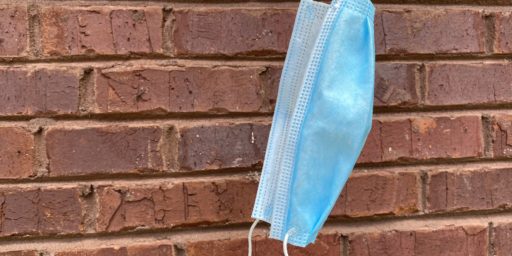Scientists Reconstruct King Tut Face
Tut Was Not Such a Handsome Golden Youth, After All (NYT)
Artists and scientists drawing on a detailed examination of King Tut’s mummy have reconstructed the face of the young ruler as he might have looked in life: an unusually elongated skull, a narrow face, pronounced lips and possibly a receding chin.
Pictures of Tutankhamen’s reconstructed face and head were released yesterday by Dr. Zahi Hawass, secretary general of the Supreme Council of Antiquities in Cairo. The new photos presented an apparently more realistic depiction of Tut than the stylized image of him on his golden burial mask. “The shape of the face and skull,” Dr. Hawass said in a statement, “are remarkably similar to a famous image of Tutankhamen as a child, where he is shown as the sun god at dawn rising from a lotus blossom.”
The reconstructions were based on the most thorough examination yet of Tut’s mummy, including 1,700 three-dimensional images taken in January with computed tomography, or CT scans. The pictures of the skull, bones and soft tissues, more revealing than ordinary X-rays, were the latest of the Tut mummy’s encounters with curious scientists and their modern technology since its discovery in 1922.
Tutankhamen died at 19, too soon to have given much thought to the hereafter. But he must have shared his royal predecessors’ belief in an afterlife befitting rulers of ancient Egypt, an eternity with all of life’s pleasures enjoyed in the company of the gods. Still, his has been an afterlife he could never have imagined.
The discovery of Tut’s tomb in the Valley of the Kings at Luxor was one of the archaeological sensations of the 20th century. The treasures buried with him have drawn throngs to exhibitions, making him the most celebrated of pharaohs. His mummy was X-rayed twice, more than three decades ago, and the results heightened speculation about his untimely death: whether he died of natural causes or was murdered.
Now three independent teams of artists and scholars, one French, one American and one Egyptian, have used the CT images to reconstruct Tut’s face, which Dr. Hawass said was the best preserved part of the mummy. The French and Egyptian teams were told the subject was Tutankhamen; the American team was working blind. The teams essentially agreed on the proportions of the skull, the basic shape of the face and the size and setting of the eyes. They differed on the shape of the nose and ears, which have not held up well. The American and French versions showed a weak chin, while the Egyptians gave Tut a stronger one. Dr. Hawass said the Egyptian team’s version “looks the most Egyptian.”
Facinating. And certainly no surprise that the stylized version of Tut on the death mask makes him more handsome than he was in real life. The pharoahs were worshiped as gods, after all.



![Military Coup Underway In Egypt [Update: Morsi Deposed]](https://otb.cachefly.net/wp-content/uploads/2011/02/egypt-flag3-512x256.gif)


Kinda looks like Wacko Jacko about 25 surgeries ago!
Keep in mind that Tut’s father Akhenaten is believed to have suffered from a genetic disease called Marfan’s syndrome, which caused his decidedly unusual apperance and which Tut may have inherited. Also Akhenaten and Tut’s mother were brother and sister.
All the pharoahs were the products of incest and inbreeding. It would be a surprise if they didn’t look a trifle odd.
This it toally awsome!!! Except he looks like a woman. Still cool!!!